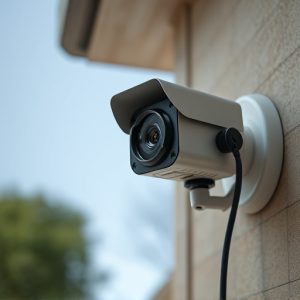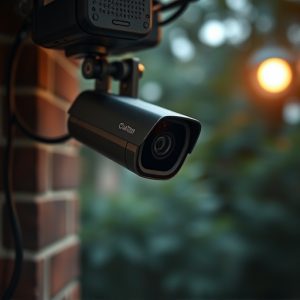Hidden Camera with Audio: Types, Legalities, and Buying Guide
Hidden cameras with audio capabilities have evolved significantly, offering advanced imaging and sou…….
Hidden cameras with audio capabilities have evolved significantly, offering advanced imaging and sound recording technologies in compact, unnoticeable devices. Ideal for legitimate surveillance or clandestine purposes, these tools feature motion detection, night vision, and cloud storage, powered by batteries or external sources. Ethical deployment demands adherence to local laws and respect for privacy rights, as unauthorized installation is illegal with potential penalties. When choosing a hidden camera with audio, prioritize high resolution, clear audio, night vision, discreet design, wireless connectivity, ample storage, and suitable field of view, plus durable construction and weatherproofing if needed.
Uncover the mysteries of hidden spy cameras with audio recording—a technology that blends discretion with surveillance. This comprehensive guide explores various types, from miniature devices to advanced systems, designed for specific applications. We delve into legal and ethical considerations, ensuring responsible use. Learn about key features, specifications, and best practices to choose the right hidden camera, mastering the art of covert observation in today’s digital era.
Understanding Hidden Spy Cameras with Audio: A Comprehensive Overview
Hidden spy cameras with audio technology have evolved significantly over time, transforming from simple, low-quality devices to sophisticated tools capable of capturing detailed visual and auditory information in discreet settings. These advanced gadgets are designed to operate unnoticed, making them ideal for various purposes, both legitimate and clandestine. Understanding their capabilities involves grasping the intricate fusion of imaging and sound recording technologies they employ.
A hidden camera with audio typically consists of a miniature camera lens, often disguised as everyday objects like lightbulbs or smoke detectors, coupled with a high-quality microphone to capture clear audio. They may be powered by batteries or connected to an external power source for prolonged operation. Modern variants also include features such as motion detection, night vision capabilities, and even cloud storage options, enhancing their utility and discretion. This technology is not without ethical considerations; its use must adhere to local laws and respect privacy rights to ensure responsible deployment.
Types and Applications of Hidden Camera Systems with Audio Recording
Hidden camera with audio systems come in various types, each designed for specific applications. One common type is the wireless spy camera, which offers seamless integration and remote monitoring via smartphone apps. These devices are often used for home security, pet surveillance, or to keep an eye on valuable assets. Another popular variety is the hardwired hidden camera with audio, ideal for professional settings like businesses, warehouses, or offices where constant supervision is required.
The applications of these systems extend beyond basic surveillance. They can be employed in investigations, legal proceedings, and even for entertainment purposes. The ability to record both video and audio makes them versatile tools, providing detailed evidence and enhancing security measures. With advancements in technology, hidden camera with audio devices are becoming increasingly sophisticated, offering improved resolution, night vision capabilities, and longer battery life.
Legal Considerations and Ethical Implications of Using Hidden Cameras
The use of a hidden camera with audio capabilities raises several legal and ethical considerations. In many jurisdictions, surveillance cameras are governed by strict privacy laws that protect individuals’ right to privacy. Installing such devices in public or private spaces without explicit consent can violate these laws, leading to potential fines or legal repercussions. Even in places where regulations permit hidden cameras for security purposes, there are often stringent rules about their placement and use, especially regarding audio recording.
Ethically, the deployment of hidden cameras invites debate about trust, transparency, and consent. Capturing images and sounds without someone’s knowledge can be seen as an invasion of privacy, particularly if the footage is used for purposes other than those initially disclosed. This technology’s potential for misuse could foster a culture of secrecy and mistrust, impacting relationships between individuals, businesses, and even law enforcement agencies. Thus, it’s crucial to approach its implementation with careful consideration of both legal frameworks and ethical standards to ensure responsible use.
Choosing the Right Hidden Spy Camera: Features, Specifications, and Best Practices
When selecting a hidden spy camera with audio, consider several key features and specifications to ensure its effectiveness and discreteness. Look for high-resolution video quality, as well as clear and sharp audio recording. Night vision capabilities are also essential for capturing footage in low-light conditions. A compact design that blends seamlessly into the environment is crucial for maintaining secrecy.
Best practices dictate choosing a camera with wireless connectivity options like Wi-Fi or Bluetooth for easy remote access and monitoring. Additionally, consider storage capacity and whether the device offers cloud storage for secure backup. Always review the field of view (FOV) angle to ensure it covers the desired area adequately. Lastly, check for durable construction suitable for outdoor use if needed, as well as weatherproof ratings for protection against harsh elements.


